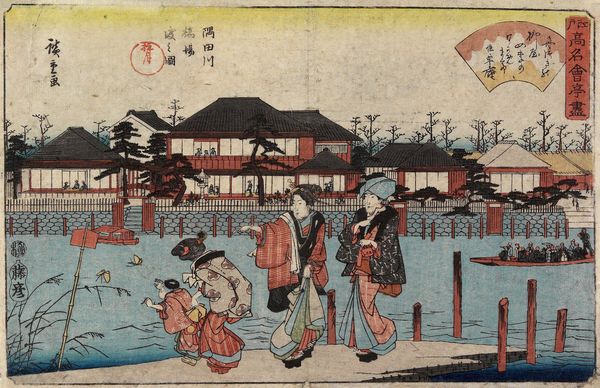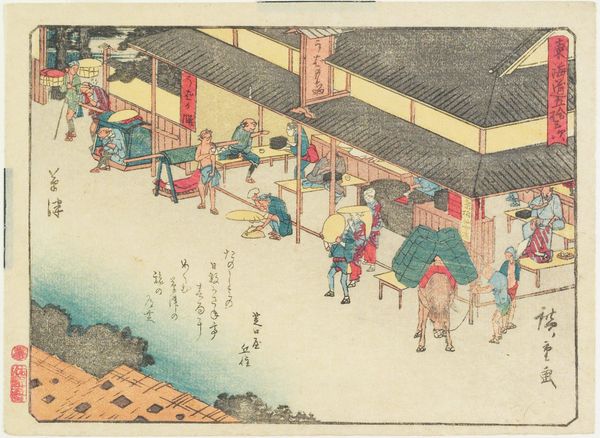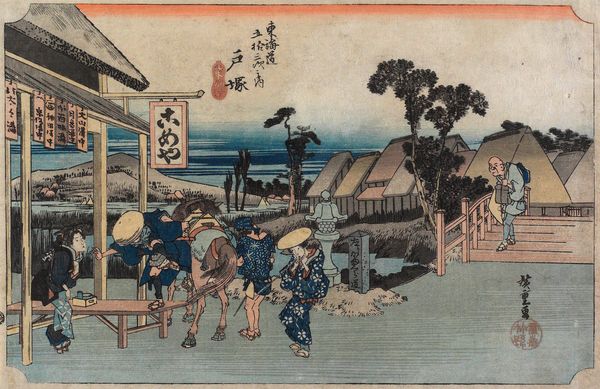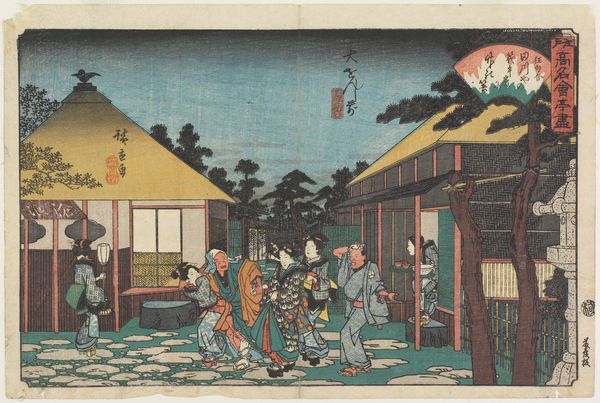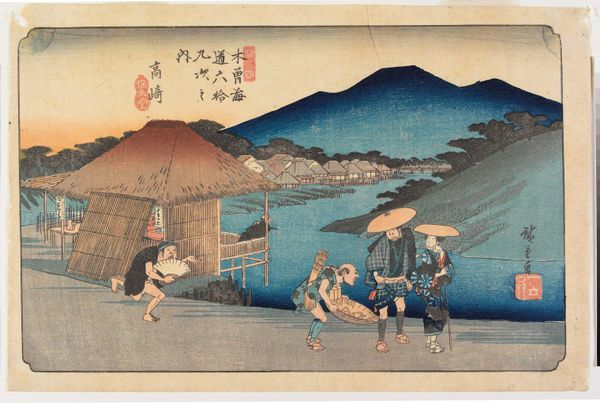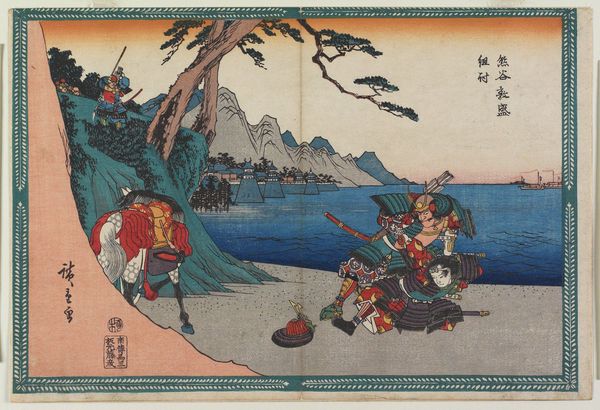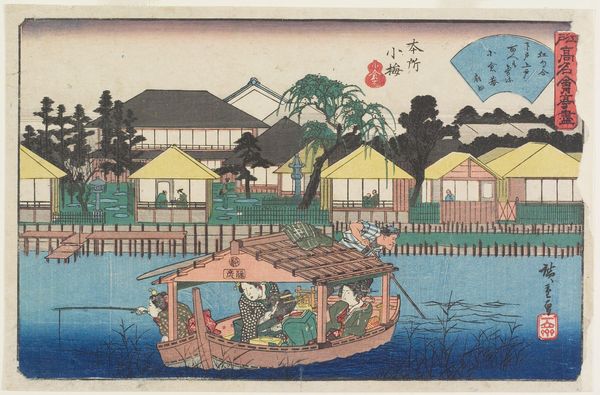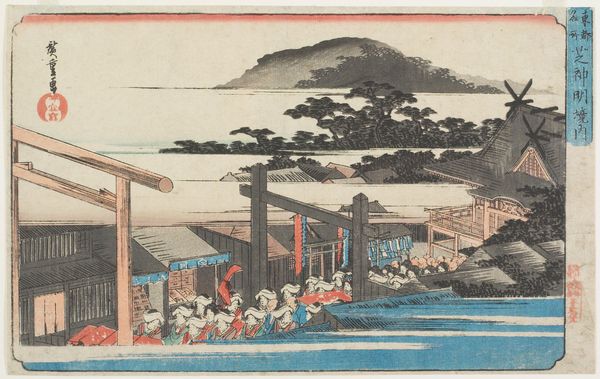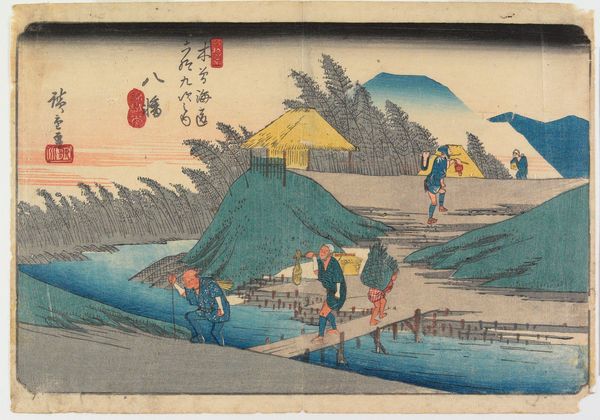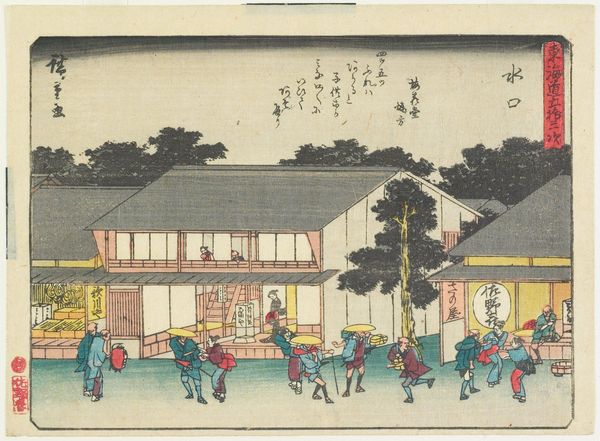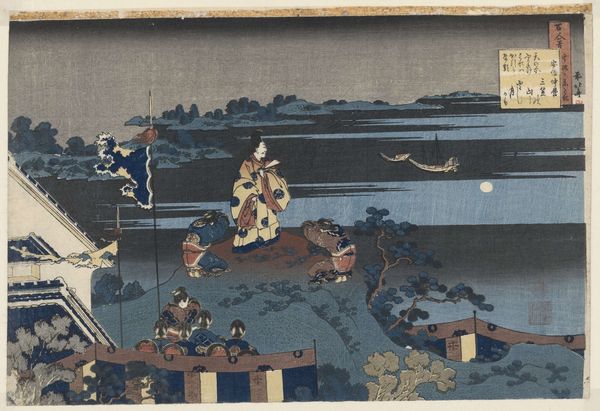
Ikenohata- Prostitutes Viewing Cherry Blossoms at the Hōraitei c. 1838 - 1840
0:00
0:00
print, ink, woodblock-print
# print
#
landscape
#
ukiyo-e
#
japan
#
figuration
#
ink
#
coloured pencil
#
woodblock-print
#
orientalism
#
genre-painting
Dimensions: 8 13/16 × 13 3/4 in. (22.4 × 35 cm) (image, horizontal ōban)
Copyright: Public Domain
Curator: Here we have "Ikenohata Prostitutes Viewing Cherry Blossoms at the Hōraitei," a woodblock print in ink and colors by Utagawa Hiroshige, dating from around 1838 to 1840. Editor: What strikes me first is the blend of wistfulness and vibrancy. The overall tone seems melancholy, yet the women’s vibrant kimonos and the cherry blossoms hint at fleeting joy. Curator: This print really encapsulates the essence of ukiyo-e, or "pictures of the floating world." It’s an exploration of the ephemeral pleasures of Edo period Japan, set against a landscape charged with cultural significance. Think about the role of prints during the Edo period; how they made art more accessible across different societal strata. Editor: Yes, the blossoms, as you point out, create a powerful transient motif. Cherry blossoms in Japanese art frequently embody mortality, and ephemeral beauty. Pairing them with women from the pleasure districts brings together different, layered understandings of this core idea. They add to an existing visual repertoire. Curator: Precisely! And while ostensibly celebrating the beauty of nature, it subtly comments on the lives of these women, whose own beauty and lives are also transient, shaped by societal expectations and limited freedoms. Also, consider the importance of place. Ikenohata, a known entertainment district, was more than just a geographic location; it was an intersection of social classes, cultural values, and economic realities. Editor: It's fascinating how the composition draws you in despite its relatively simple elements. The distant shoreline acts almost like a backdrop to the human drama taking place here in the foreground. The stylized water seems less concerned with objective reality and more with expressing a certain feeling. Curator: Indeed, Hiroshige manipulates perspective and space to construct a sense of depth but also to create an emotional resonance. This piece isn't simply about documentation, it is about crafting a mood and conveying layered messages. Editor: Seeing those kinds of symbolic layers provides such a potent glimpse into Edo-period society. Thanks to this reading, I leave with so much to ponder about that era. Curator: It's a testament to how art can reveal history, culture, and psychology all at once. A pleasure talking it through.
Comments
No comments
Be the first to comment and join the conversation on the ultimate creative platform.
